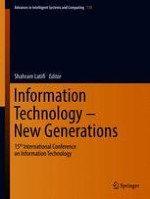2018 | OriginalPaper | Chapter
9. Malicious Software Classification Using VGG16 Deep Neural Network’s Bottleneck Features
Authors : Edmar Rezende, Guilherme Ruppert, Tiago Carvalho, Antonio Theophilo, Fabio Ramos, Paulo de Geus
Published in: Information Technology - New Generations
Publisher: Springer International Publishing
Activate our intelligent search to find suitable subject content or patents.
Select sections of text to find matching patents with Artificial Intelligence. powered by
Select sections of text to find additional relevant content using AI-assisted search. powered by
